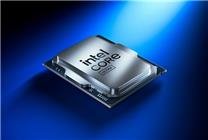Intel’s Challenging Semiconductor Landscape: Future Strategies and Options
Summary:
- Intel faces significant challenges in semiconductor manufacturing, struggling against competitors like TSMC and Samsung.
- U.S. government regulations may limit Intel’s ability to divest its manufacturing arm, despite potential market opportunities.
- Intel’s future strategy includes potential collaboration with external customers while maintaining control over its core operations.
Semiconductor chip manufacturing was once a crown jewel for Intel, but over the past two years, it has increasingly become a burden. Recent analyses indicate that the company’s performance difficulties can largely be attributed to its manufacturing challenges, resulting in a technology gap when compared to competitors, particularly TSMC and Samsung.
In response to these challenges, Intel has made several attempts to reform its chip manufacturing operations. Currently, the department operates as a separate entity, yet it remains heavily reliant on internal products rather than attracting a substantial external customer base. While the advanced 18A process continues to support Intel’s offerings, expectations for the upcoming 14A process are tepid, with many anticipating a lack of customer interest that could halt plans for new factory construction next year.
Market analysts previously speculated that Intel might completely divest its manufacturing sector, positioning itself similarly to companies like AMD, NVIDIA, and Qualcomm—firms that have thrived by focusing more on design and less on manufacturing. However, a 10% investment from the U.S. government complicates the potential for a complete sale. New stipulations included in their agreement indicate that if Intel’s ownership dips below 51%, the government retains the right to acquire an additional 5% stake at a reduced price. This regulatory move aims to ensure that foreign investors do not gain control over Intel’s semiconductor manufacturing, which is seen as a vital asset for the U.S. economy.
One of the greatest constraints remains the apprehension towards foreign investors. Notably, GlobalFoundries, once part of AMD, is now fully owned by UAE Capital, raising concerns in the U.S. regarding who controls critical technology sectors.
So, what lies ahead for Intel? At a recent Citi TMT conference, CFO David Zinsner acknowledged that a sale of their wafer manufacturing business remains a possibility in the future, yet, per the aforementioned constraints, Intel would still maintain a stake in any such endeavor.
There are clear advantages to splitting this segment of the business from the core. An independently operated manufacturing division could enhance its appeal to external customers while safeguarding intellectual property rights. Additionally, this strategy could attract investment from outside sources, crucial for scaling the business and improving technological capabilities.
As the semiconductor landscape continues to evolve, Intel finds itself at a crossroads. The company’s ability to adapt its manufacturing strategies, maintain government relations, and attract external partnerships will be pivotal in determining its long-term success and relevance in a highly competitive market.
Ultimately, while Intel’s path forward is laden with challenges, strategic decisions made in the near future will significantly influence its trajectory. A careful balance between retaining control and inviting external collaboration might just be the key to navigating the complexities of today’s semiconductor industry.





